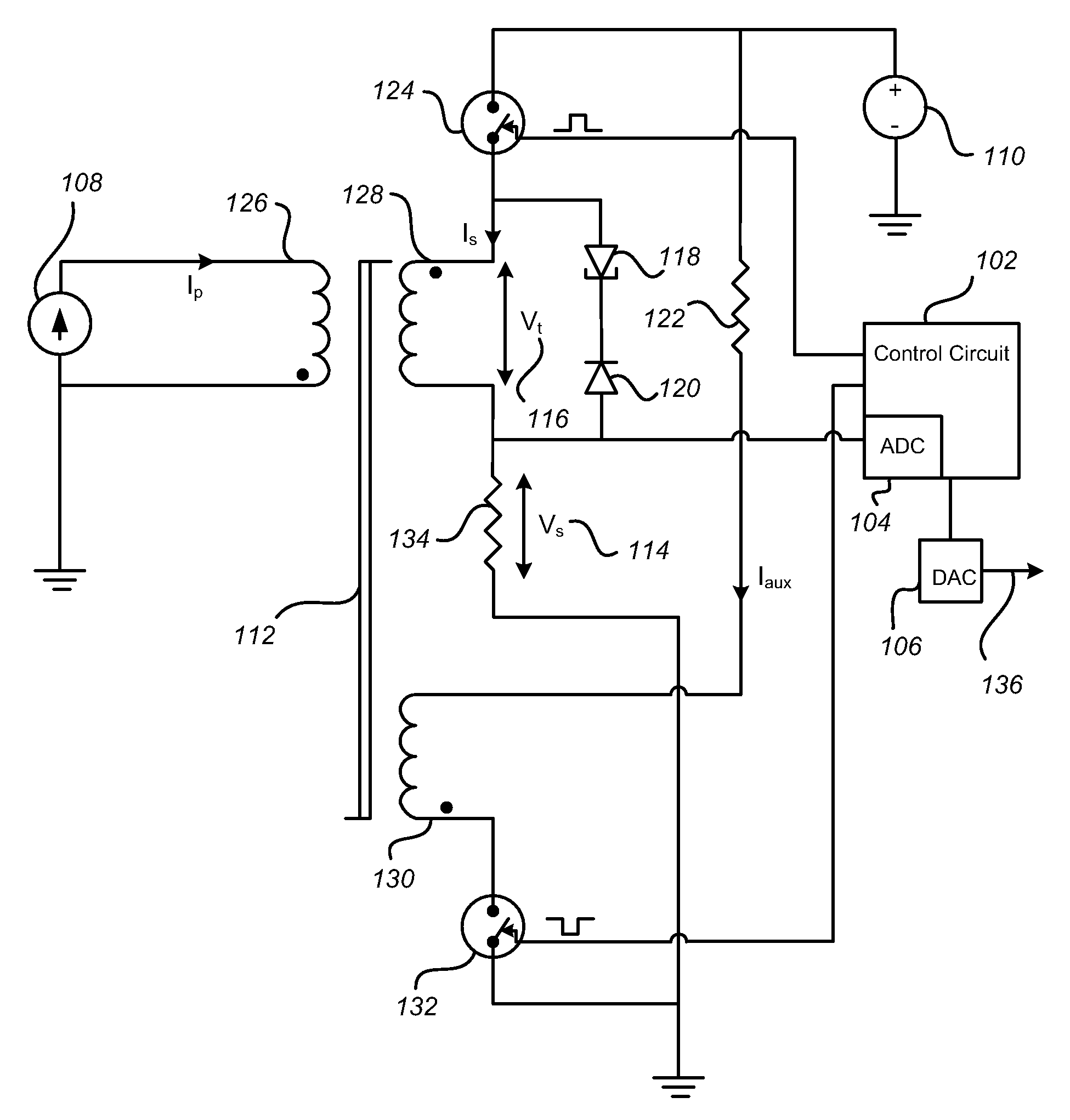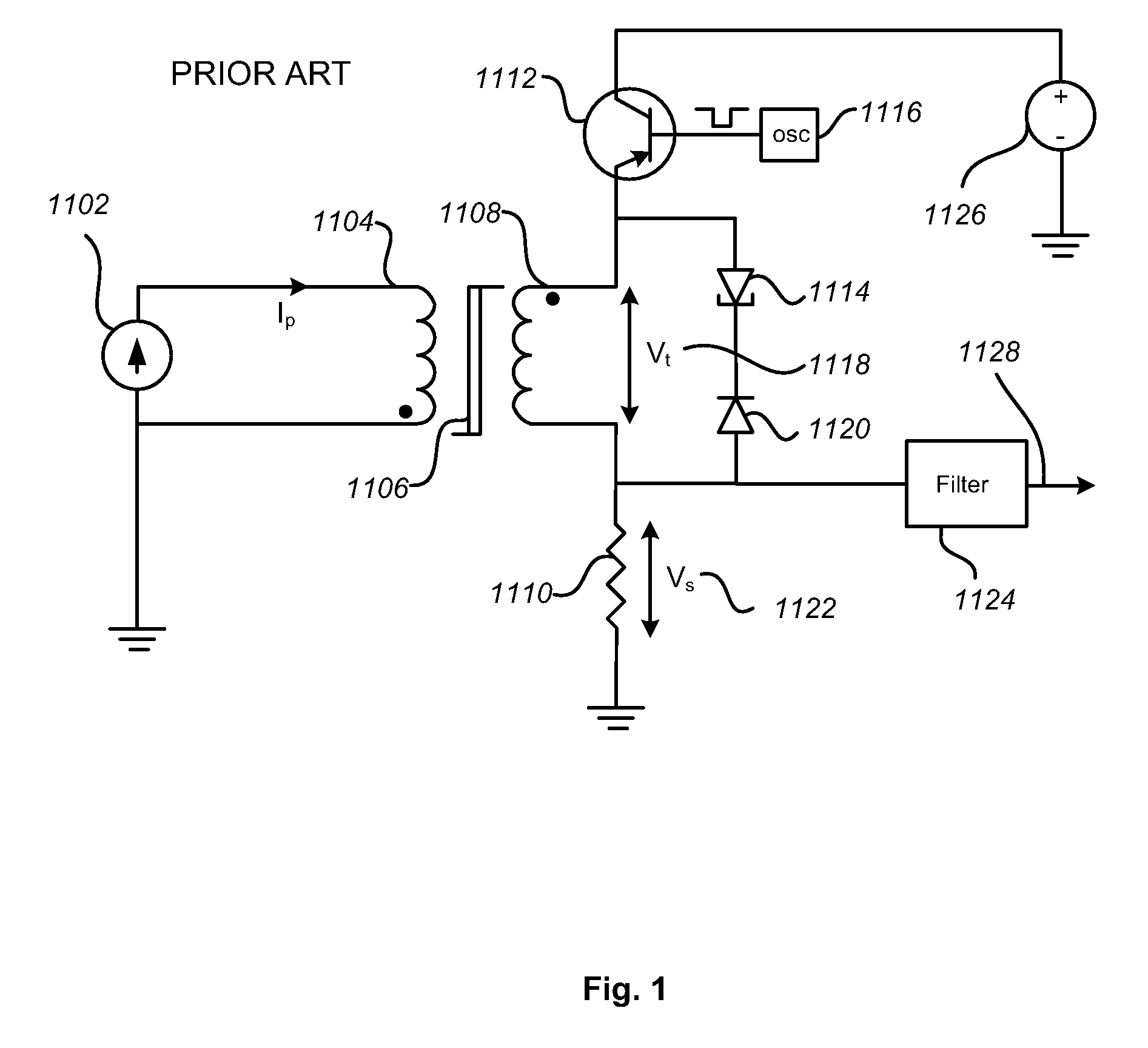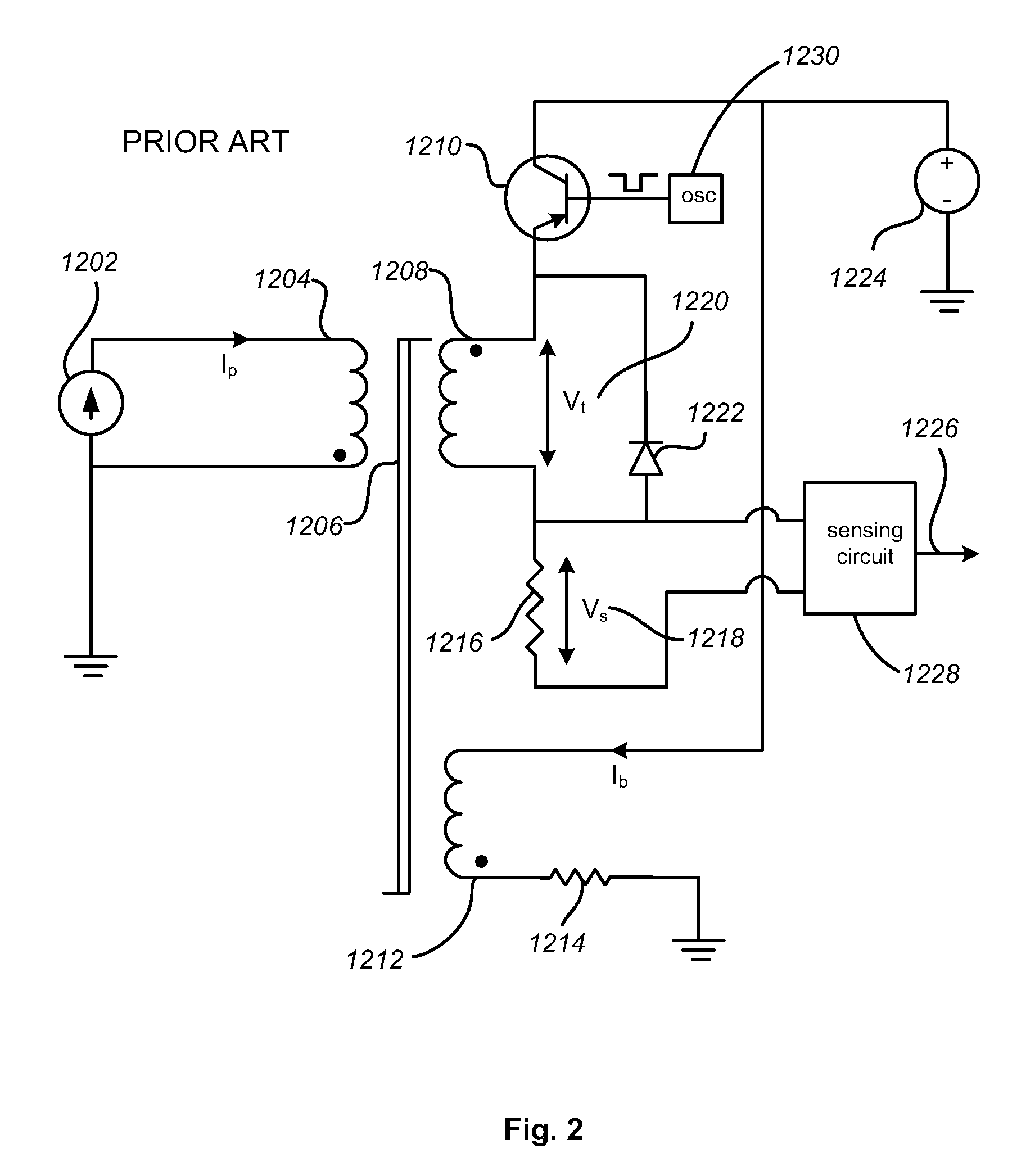Isolated current to voltage, voltage to voltage converter
a voltage converter and isolated current technology, applied in the direction of measurement devices, instruments, measurement using dc-ac conversion, etc., can solve the problems of increasing the complexity of the circuit, reducing the size and complexity of the magnetic circuit, and increasing the cost of the circuit, so as to reduce the cost and bulk of the sensor, the cost of a slightly more complex control circuit, and the effect of little power
- Summary
- Abstract
- Description
- Claims
- Application Information
AI Technical Summary
Benefits of technology
Problems solved by technology
Method used
Image
Examples
third embodiment
[0059]FIG. 6 represents a current sensor in accordance with the present invention. In this case, it is desired to measure a voltage or voltage difference rather than a current in accordance with the present invention. To do so, a resistor 404 is employed to convert the input voltage 402 into a current that flows through the primary winding 126. The voltage source, Vpot 406, is an arbitrary voltage, emphasizing that the sensor is able to measure a voltage difference or voltage 402 superimposed upon a high and changing voltage potential 406 by providing galvanic isolation. To keep power consumption low, the resistor 404 will generally be chosen to be quite large, thereby reducing the current flowing through the primary winding 126. To maintain the sensitivity of the sensing circuit, the number of turns in the primary winding 126 may be increased. The remainder of the circuit is identical to that shown in FIG. 3 with the exception of the optional digital-to-analog converter 106, which ...
fourth embodiment
[0060]FIG. 7 illustrates the current sensor in accordance with the present invention. In order to provide a low-cost analog output, a simple sample-and-hold circuit 504 is used to acquire the pulsed voltage appearing across resistor 134. The sample-and-hold circuit converts the pulsed voltage signal into a steady analog voltage output 506.
fifth embodiment
[0061]FIG. 8 illustrates a current sensor in accordance with the present invention. Here, the output circuit is configured to provide a digital output signal that changes state when the current being measured 108 exceeds a pre-set value. An analog comparator 606 is used to compare a reference voltage level 608 with the voltage 114 across the sense resistor 134. When the measured voltage 114 exceeds the reference voltage 608, the output of comparator 606 will change. Since the voltage 114 is available only during time t2, a D-Q flip flop is used to capture the state of the comparator at the sample time 320 (see FIG. 5).
PUM
 Login to View More
Login to View More Abstract
Description
Claims
Application Information
 Login to View More
Login to View More - R&D
- Intellectual Property
- Life Sciences
- Materials
- Tech Scout
- Unparalleled Data Quality
- Higher Quality Content
- 60% Fewer Hallucinations
Browse by: Latest US Patents, China's latest patents, Technical Efficacy Thesaurus, Application Domain, Technology Topic, Popular Technical Reports.
© 2025 PatSnap. All rights reserved.Legal|Privacy policy|Modern Slavery Act Transparency Statement|Sitemap|About US| Contact US: help@patsnap.com



